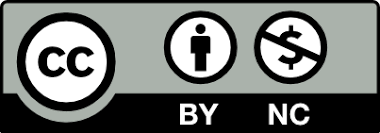شمارۀ جدید فصلنامه (تابستان 1404) منتشر شد
Volume 14, Issue 2 (11-2023)
Social Problems of Iran 2023, 14(2): 71-102 |
Back to browse issues page
Download citation:
BibTeX | RIS | EndNote | Medlars | ProCite | Reference Manager | RefWorks
Send citation to:



BibTeX | RIS | EndNote | Medlars | ProCite | Reference Manager | RefWorks
Send citation to:
pourganji A, Afshani S A. (2023). Sociological Explanation of Influencing Factors on Students' Attitudes towards Drugs (Case study: second grade secondary school students in Mehriz city). Social Problems of Iran. 14(2), 71-102. doi:10.61186/jspi.14.2.71
URL: http://jspi.khu.ac.ir/article-1-3654-en.html
URL: http://jspi.khu.ac.ir/article-1-3654-en.html
1- Payam Noor university , pourganji@pnu.ac.ir
2- Yazd University
2- Yazd University
Abstract: (2437 Views)
In recent years, the age of drug use in Iran has decreased to 10-12 years, and students, as a group in this sensitive age group, have been exposed to drug use more than before. Various factors play a role in the formation of this problem, knowing which can lead to a more favorable encounter with the problem of drug use among students. Based on this, the present research has analyzed the sociological factors affecting students' attitudes towards drugs by using quantitative methodology and survey method. The statistical population of the research was the second grade high school students of Mehriz, 250 of whom were studied using the stratified sampling method. The findings showed that the attitude of students towards drug use is negative and the effect of the variables of religiosity, social capital and the type of relationships within the family on the attitude of students towards drugs is also negative. Furthermore, the independent variables in total have an average ability to explain the variance of the variable of attitude towards drug use. Based on this, it can be said that strengthening religiosity, social capital and the type of family relationships among a significant part of students can lead to strengthening the negative attitude of students towards drug use.
Type of Article: Original Research |
Subject:
Crime & Deviances
Received: 2023/11/4 | Accepted: 2024/01/15 | Published: 2024/02/9
Received: 2023/11/4 | Accepted: 2024/01/15 | Published: 2024/02/9
References
1. Alves, R., Precioso, J., & Becoña, E. (2021). Llicit drug use among college students: The importance of knowledge about drugs, live at home and peer influence. Journal of psychoactive drugs, 53(4), 329-338. [DOI:10.1080/02791072.2020.1865592]
2. Burt, R. S. (2018). Structural holes. In Social Stratification (pp. 659-663). Routledge. [DOI:10.4324/9780429494468-63]
3. Fernández-Villa, T., Molina, A. J., Amezcua-Prieto, C., Mateos, R., Cancela, J. M., Delgado-Rodríguez, M., & Martín, V. (2019). Drug use, family support and related factors in university students. A cross-sectional study based on the uniHcos Project data. Gaceta sanitaria, 33, 141-147. [DOI:10.1016/j.gaceta.2017.10.019]
4. Fine, B. (2002). Social capital versus social theory. Routledge. [DOI:10.4324/9780203470787]
5. Fletcher, A., & Bonell, C. (2013). Social network influences on smoking, drinking and drug use in secondary school: centrifugal and centripetal forces. Sociology of Health & Illness, 35(5), 699-715. [DOI:10.1111/j.1467-9566.2012.01522.x]
6. Francis, J. M., Myers, B., Nkosi, S., Petersen Williams, P., Carney, T., Lombard, C., & Morojele, N. (2019). The prevalence of religiosity and association between religiosity and alcohol use, other drug use, and risky sexual behaviours among grade 8-10 learners in Western Cape, South Africa. PloS one, 14(2), e0211322. [DOI:10.1371/journal.pone.0211322]
7. Hirschi, T. (2017). Causes of delinquency. Routledge. [DOI:10.4324/9781315081649]
8. Jang, S. J., Foertsch, S., Johnson, B. R., Ozbay, O., & Takmaz Demirel, F. (2023). Religiosity and deviance among college students in Türkiye: A test of ascetic theory. Deviant Behavior, 1-15. [DOI:10.1080/01639625.2023.2183350]
9. Kovacs, E., Piko, B. F., & Fitzpatrick, K. M. (2011). Religiosity as a protective factor against substance use among Hungarian high school students. Substance use & misuse, 46(10), 1346-1357. [DOI:10.3109/10826084.2011.581322]
10. Miech, R. A., Johnston, L. D., Patrick, M. E., O'Malley, P. M., Bachman, J. G., & Schulenberg, J. E. (2023). Monitoring the Future National Survey Results on Drug Use, 1975-2022: Secondary School Students. Institute for Social Research.
11. Miller, I. W., Ryan, C. E., Keitner, G. I., Bishop, D. S., & Epstein, N. B. (2000). The McMaster approach to families: Theory, assessment, treatment and research. Journal of family therapy, 22(2), 168-189. [DOI:10.1111/1467-6427.00145]
12. Mousavi, F., Garcia, D., Jimmefors, A., Archer, T., & Ewalds-Kvist, B. (2014). Swedish high-school pupils' attitudes towards drugs in relation to drug usage, impulsiveness and other risk factors. PeerJ, 2, e410. [DOI:10.7717/peerj.410]
13. Rice, R. E., Donohew, L., & Clayton, R. (2003). Peer network, sensation seeking, and drug use among junior and senior high school students. Connections, 25(2), 32-58.
14. Simmel, G. (1997). Essays on religion (Vol.10). Yale University Press.
15. Tonin, S. L., Burrow-Sanchez, J. J., Harrison, R. S., & Kircher, J. C. (2008). The influence of attitudes, acculturation, and gender on substance use for Mexican American middle school students. Addictive Behaviors, 33(7), 949-954. [DOI:10.1016/j.addbeh.2008.02.014]
16. Tsering, D., Pal, R., & Dasgupta, A. (2010). Substance use among adolescent high school students in India: A survey of knowledge, attitude, and opinion. Journal of Pharmacy and Bioallied Sciences, 2(2), 137. [DOI:10.4103/0975-7406.67005]
17. Unlu, A., Sahin, I., & Wan, T. T. (2014). Three dimensions of youth social capital and their impacts on substance use. Journal of Child & Adolescent Substance Abuse, 23(4), 230-241. [DOI:10.1080/1067828X.2013.786934]
18. Walker, R., & Shepherd, C. (2008). Strengthening Aboriginal family functioning: What works and why? Melbourne (AUST): Australian Institute of Family Studies.
Send email to the article author
| Rights and permissions | |
 |
This work is licensed under a Creative Commons Attribution-NonCommercial 4.0 International License. |








